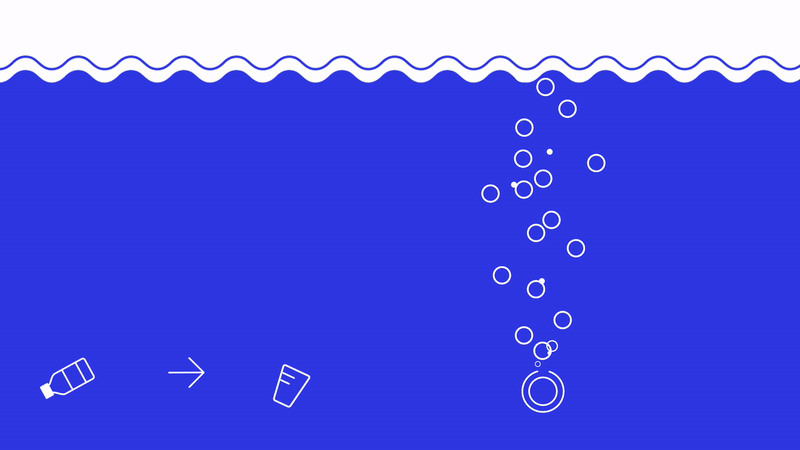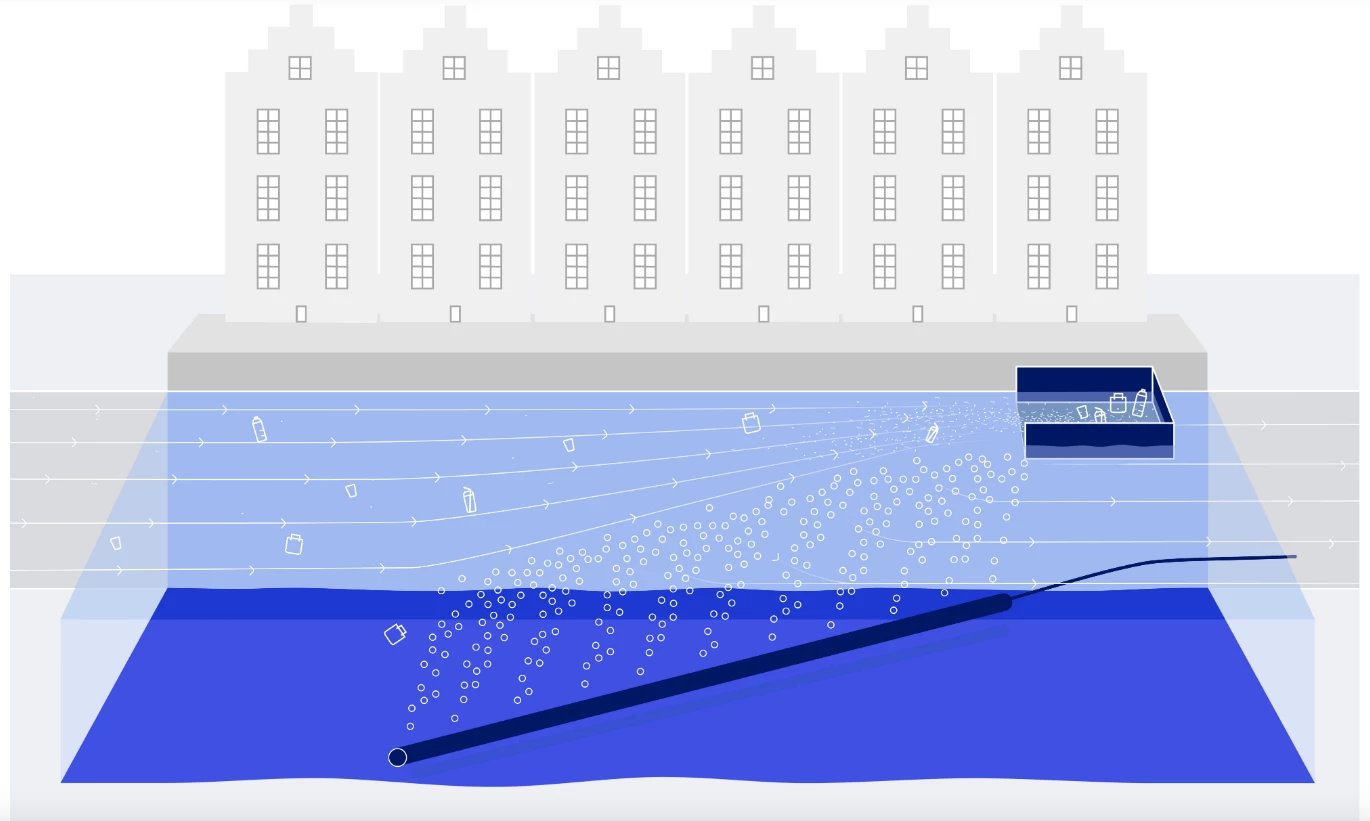Take a walk along the canal in Amsterdam’s Westerdok district, and you may see what looks like an unsightly mess of waste gathered at the edge of the canal. In a way, that’s a good thing. What you’re seeing is the work of a new bubble barrier which is undergoing a three-year pilot to stop plastic waste flowing out to sea.
The theory is that a wall of bubbles emitted from a perforated tube (which is carrying compressed air at the bed of the canal) can trap plastic waste without hindering boats or aquatic wildlife. The bubbles, which are literally just air bubbles, not only prevent the flow of waste, but can push submerged items to the surface to be caught.
It’s claimed that the bubble barrier can even fight the blooming of harmful algae by increasing oxygen levels in the water.

The tube is laid at an angle, so the flow of the river encourages the waste to one side of the canal where it can be caught by a floating platform, to be retrieved and disposed of.
It’s hoped that the barrier will also trap smaller particles of waste that can’t be collected by Amsterdam’s garbage-collection boats. This shouldn’t undermine the great work those boats do, removing some 42 metric tons of plastic from the city’s canals each year.
The formal pilot follows the testing of a prototype in the IJssel river in the Netherlands: the same river that Amsterdam’s canal network flows into. The prototype was found to trap an average of 86 percent of plastic waste, preventing it from entering the North Sea. The plan is to analyze the trapped waste to monitor both the extent and type of plastic waste pollution in Amsterdam, and the effectiveness of the barrier itself.

The barrier is the work of Dutch startup The Great Bubble Barrier, which is working with the city’s water board and municipality of Amsterdam on the Westerdok pilot scheme, installed at one of the canal network’s outlets into the IJssel. It is based on similar technology which has seen bubble barriers used to contain oil spills and noise near underwater building sites.
According to the World Economic Forum, as of 2016, 8 million metric tons of plastic end up in the world’s oceans each year, which it says is equivalent to “one garbage truckload every minute.” A 2015 research paper published in Science put the figure between 4.8 million and 12.7 million metric tons for the year 2010. If a large proportion of that waste is transported via river, bubble barriers like this could theoretically have a big role to play in reducing ocean waste.
Plastic waste in the ocean is a problem regardless of its size. Marine life can become entangled in large pieces, which can cause discomfort or, in some cases, death. And smaller pieces can be ingested, which is a particular problem if the plastics have absorbed pollutants on the way. Larger pieces of plastic can continue to cause problems as they degrade into smaller pieces, even past the point of being visible to the eye.
Sources: World Economic Forum, The Great Bubble Barrier




